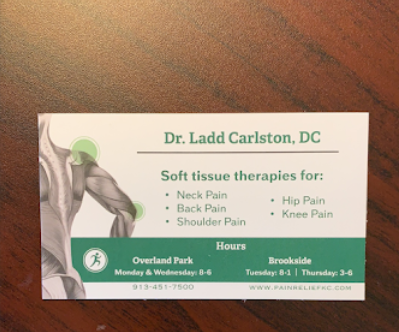Are you tired of relying on painkillers to manage your chronic joint pain? Have you ever considered chiropractic treatment? Chiropractic is a non-invasive, drug-free approach to healthcare that focuses on the body’s innate ability to heal itself. The primary technique used by chiropractors is joint manipulation, which involves applying a controlled force to a joint to restore its proper function and range of motion. In this blog, we will discuss what chiropractic treatment is, how it works, and the benefits of joint manipulation. We will also delve into the types of joints that chiropractors can manipulate and provide tips on finding a reputable chiropractor near you. Say goodbye to chronic joint pain and hello to improved mobility and overall wellness!
What is Chiropractic Treatment?
Chiropractic treatment is a form of alternative medicine focused on diagnosing and treating musculoskeletal disorders, primarily those affecting the spine. It is based on the belief that proper alignment of the musculoskeletal system, particularly the spine, plays a crucial role in overall health and well-being.
The fundamental principle behind chiropractic care is that spinal misalignments or subluxations can interfere with the body’s nervous system, leading to pain, dysfunction, and various health issues. By correcting these misalignments, chiropractors aim to restore the body’s natural ability to heal itself and enhance its overall function.
Chiropractic treatment is commonly sought for conditions such as back pain, neck pain, headaches, sciatica, and joint problems. However, chiropractors may also provide care for various other musculoskeletal issues. They typically assess patients through physical examinations, take medical histories, and may order diagnostic tests, such as X-rays or MRI scans, to aid in diagnosis.
How Does Chiropractic Help?
Chiropractic care aids in reducing pain and discomfort in joints, muscles, and the spine while enhancing mobility, flexibility, and range of motion. It promotes natural healing by lowering inflammation levels. Chiropractors also suggest lifestyle and exercise modifications to improve overall wellness.

Benefits of Joint Manipulation
Joint manipulation, also known as joint mobilization or joint adjustment, is a therapeutic technique commonly used by healthcare professionals such as chiropractors, osteopaths, and physical therapists. It involves applying controlled force or pressure to a joint to restore its normal range of motion and alleviate pain or dysfunction. Here are some potential benefits of joint manipulation:
- Pain relief: Joint manipulation can help reduce pain associated with various musculoskeletal conditions, such as back pain, neck pain, shoulder pain, and joint stiffness. Restoring proper joint alignment and function can alleviate pressure on surrounding structures, nerves, and tissues, leading to pain relief.
- Improved joint mobility: Joint manipulation aims to restore normal joint motion and flexibility. By applying specific techniques, the practitioner can address joint restrictions or limitations and enhance the joint’s range of motion. This increased mobility can improve overall joint function and allow for better movement.
- Enhanced physical function: Properly aligned joints and moving freely can positively affect physical performance and function. Joint manipulation can be beneficial for athletes or individuals involved in sports or physically demanding activities by improving joint mobility, flexibility, and overall body mechanics.
- Reduced muscle tension and spasms: Joint dysfunction can lead to muscle imbalances, tension, and spasms. By restoring proper joint alignment and function, joint manipulation can help alleviate these issues, resulting in reduced muscle tightness and improved muscle flexibility.
- Improved posture: Joint manipulation can have a positive impact on posture. Misaligned or restricted joints can contribute to poor posture, leading to pain and discomfort. By realigning the joints and promoting proper movement patterns, joint manipulation can help improve posture and reduce associated symptoms.
- Complementary treatment option: Joint manipulation can be used as a complementary or adjunctive therapy alongside other treatment modalities. It can enhance the effectiveness of other interventions, such as exercise therapy, physical therapy, or rehabilitation programs, by improving joint function and mobility.
- Non-invasive and conservative: Joint manipulation is a non-invasive treatment option that avoids surgical procedures or invasive interventions. It is generally considered a conservative approach to managing musculoskeletal conditions, making it an attractive choice for individuals seeking non-surgical or drug-free alternatives.
Types of Joints that Can be Manipulated by Chiropractors
Chiropractors primarily focus on the musculoskeletal system, particularly the spine. They use a variety of manual manipulation techniques to treat conditions related to joint dysfunction, misalignment, and restricted mobility. While chiropractic care mainly emphasizes spinal adjustments, chiropractors can also manipulate other joints in the body. Here are some types of joints that chiropractors commonly manipulate:
- Spinal joints: Chiropractors are well-known for performing spinal adjustments or spinal manipulations. They use controlled, sudden force to apply pressure to specific vertebrae, aiming to correct misalignments, reduce pain, and improve joint function.
- Sacroiliac joints: These are the joints between the sacrum (the triangular bone at the base of the spine) and the ilium (pelvic bone). Chiropractors can perform adjustments to address misalignments and restore normal movement and function of the sacroiliac joints.
- Temporomandibular joints (TMJ): These are the joints connecting the jawbone to the skull. Chiropractors can use specialized techniques to manipulate the TMJ, particularly in cases of temporomandibular joint disorder (TMD) or jaw pain.
- Shoulder joints: Chiropractors may perform manipulations or mobilizations to address shoulder joint dysfunctions. These techniques can help relieve pain, increase range of motion, and improve shoulder function.
- Hip joints: Chiropractors can manipulate the hip joints to address issues such as restricted mobility, misalignments, or hip pain. Adjustments may involve gentle thrusts or mobilization techniques.
- Knee joints: While chiropractors typically don’t directly manipulate the knee joint, they may employ techniques to address associated musculoskeletal imbalances. Adjustments and manipulations of the surrounding structures like the pelvis, hip, or ankle can indirectly affect knee function.
- Ankle and foot joints: Chiropractors may perform manipulations or mobilizations to address joint dysfunctions or pain in the ankles or feet. These techniques can help restore proper joint mechanics and alleviate discomfort.
It is important to note that chiropractors can manipulate different parts of the body, like spinal joints or extremity joints, with proper care to avoid complications. Manual adjustments can alleviate discomfort caused by acute low back pain or neck pain, including headaches. Clinical trials have suggested that it may also benefit chronic pain conditions like fibromyalgia or osteoarthritis. Maintaining a healthy lifestyle with stretching exercises and nutrition may complement chiropractic care.
How to Find a Chiropractor

Finding a chiropractor can be done using various methods. Here are some steps you can follow to find a chiropractor:
- Ask for recommendations: Start by asking your friends, family members, or coworkers if they have any recommendations for a chiropractor. Personal referrals can be valuable since you can get firsthand information about someone’s experience.
- Consult your primary healthcare provider: Contact your primary care doctor or healthcare provider and inquire if they can recommend a chiropractor. They may have a list of trusted professionals or be able to provide guidance based on your specific needs.
- Check online directories: Utilize online directories that list healthcare providers, including chiropractors. Websites like Healthgrades, Zocdoc, and RateMDs allow you to search for chiropractors in your area, read patient reviews, and access information about their qualifications and expertise.
- Research chiropractic associations: Look for chiropractic associations or organizations in your country or region. These associations often have directories of their members, which can help you find licensed and qualified chiropractors. For example, in the United States, you can refer to the American Chiropractic Association (ACA) or your state’s chiropractic association.
- Verify credentials and licenses: Once you have a list of potential chiropractors, verify their credentials and licenses. Check if they are licensed to practice in your state or country. You can typically find this information on their website or by contacting the relevant regulatory body for chiropractic practitioners.
- Consider specialization and experience: Chiropractors may have different areas of specialization or focus, such as sports injuries, prenatal care, or pediatric chiropractic. Consider your specific needs and find a chiropractor who has experience and expertise in addressing those needs.
- Read reviews and testimonials: Look for online reviews and testimonials from patients who have visited the chiropractors you are considering. This can provide insight into their reputation, quality of care, and patient satisfaction.
- Contact and interview potential chiropractors: Once you have narrowed down your list, contact the chiropractors’ offices and inquire about their services, availability, and fees. You can also schedule a consultation or brief interview to get a better sense of their approach and how comfortable you feel with them.
- Check insurance coverage: If you have health insurance, check if chiropractic services are covered and if there are any specific providers you need to visit to receive the benefits. Contact your insurance provider directly for detailed information on coverage and reimbursement.
Conclusion
Joint manipulation is a widely accepted chiropractic technique that can help alleviate pain, increase mobility, and improve overall health. By adjusting the joints in your body, a chiropractor can restore your body’s natural balance and function. This treatment method has many benefits, including reduced pain, improved range of motion, and increased flexibility. If you’re interested in exploring the benefits of joint manipulation for yourself, it’s important to find a qualified chiropractor who can provide safe and effective treatment.

